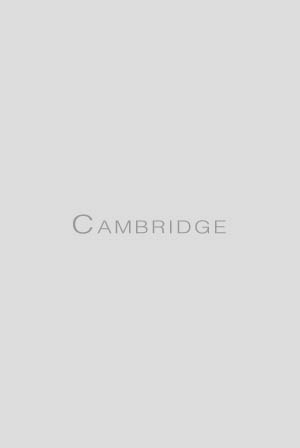Article contents
Concert Life in Eighteenth Century England
Published online by Cambridge University Press: 01 January 2020
Extract
The Period following Purcell's death has long been looked upon as one of the Dark Ages of English music. It is unquestionably true that Britain took a long time to produce her next really great composer, but our readiness to accept a musical back seat and our refusal to make unjustifiable claims on behalf of British music have tended to blind us to the true facts of the musical life of eighteenth-century England. The fact that Handel prospered here, that Haydn wrote some of his finest music for London audiences, and that whole hosts of minor masters settled here—J. C. Bach and Geminiani, for example—surely tells us a good deal about the standards of taste pertaining among London audiences. In fact, concert life in eighteenth-century England as a whole had a variety and vitality to which it would be hard to find a parallel. Not only were concerts held in the fashionable London salons, but in the ‘Great Rooms’ of taverns in villages which today are barely large enough to find a place on a map.
- Type
- Research Article
- Information
- Copyright
- Copyright © Royal Musical Association, 1958
References
1 Kathleen Dale, article ‘London’, Grove's Dictionary, 5th edn., London, 1954; R. S. Elkin, The Old Concert-Rooms of London, London, 1955.Google Scholar
2 A General History of the Science and Practice of Music, London, 1776, v. 366.Google Scholar
3 Fifteen notebooks now survive of a set which probably originally comprised twenty; in the hand of John Marsh and one of his sons, they cover from 1768 to Marsh's death in 1828, apart from 1794–1803, for which period two volumes are missing.Google Scholar
4 The Professional Life of Mr. Dibdin, London, 1803, i. 14.Google Scholar
5 There are thirty-one Mann notebooks; twenty-four are in Norwich Public Library and seven (concerning music in Cambridge and Cambridgeshire) are in the Library of King's College, Cambridge. These notebooks provide the principal source of information on music in East Anglia for this paper.Google Scholar
6 The study of 18th-century subscription lists has provided most of the information presented in this paper regarding the existence of musical societies in provincial cities.Google Scholar
7 Mee, J. H., The Oldest Music-Room in Europe, London, 1911.CrossRefGoogle Scholar
8 Deutsch, O. E., various articles on music in Cambridge, Cambridge Review, lxii (1940–41), 312 and lxiii (1941–42), 133, 244, 260 and 372.Google Scholar
9 J. Sutcliffe Smith, The Story of Music in Birmingham, Birmingham, 1945.Google Scholar
10 Harland, J., ‘Manchester Concerts in 1744’ and ‘The Earlier Days of the “Gentlemen's Concerts”’, in Collectanea relating to Manchester (Chetham Society Publications, lxxii), Manchester, 1867, pp. 66 and 77.Google Scholar
11 Three volumes, 1838–53.Google Scholar
12 The Scientific Papers of Sir William Herschel, London, 1912, biographical introduction by J. L. E. Dreyer; C. A. Lubbock, The Herschel Chronicle, Cambridge, 1933.Google Scholar
13 Musical Tour, Sheffield, 1788, p. 29.Google Scholar
14 Music Making in the Olden Days, London, 1950, and ‘Concerts in 18th-Century Scotland’, Proceedings of the Royal Philosophical Society of Glasgow, lxix (1944–45), 99.Google Scholar
15 British Museum, press-mark g. 212.(10.)Google Scholar
16 Hanbury, W., The History of the Rise and Progress of the Charitable Foundations at Church-Langton, London, 1767; William Hayes, Anecdotes of the Five Music-Meetings at Church-Langton, Oxford, 1768; M. Sands. ‘Troubles of an Eighteenth-Century Festival Organizer’, Monthly Musical Record, lxxix (1949), 211, 236, 260.Google Scholar
17 Torrington, 5th Viscount, The Torrington Diaries, 1781–94, ed. C. Bruyn Andrews, London, 1934, i. 259; Mee, ibid., 82–83.Google Scholar
18 Jackson's Oxford Journal, 12 August 1758.Google Scholar
19 The Diary of Sylas Neville, 1767–88, ed. B. Cozens-Hardy, London, 1950, p. 315 (26 March 1784).Google Scholar
20 ‘Musick, Dancing and Concerts’, London Magazine, xxiii (1754). 484.Google Scholar
- 2
- Cited by


